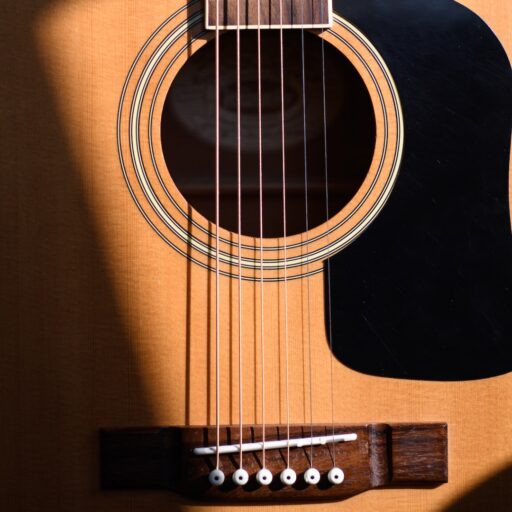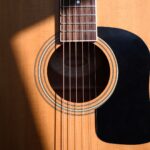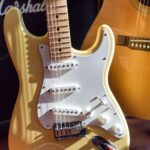Support our educational content for free when you purchase through links on our site. Learn more
12 Types of Ukulele Wood You Must Know in 2025 🎸
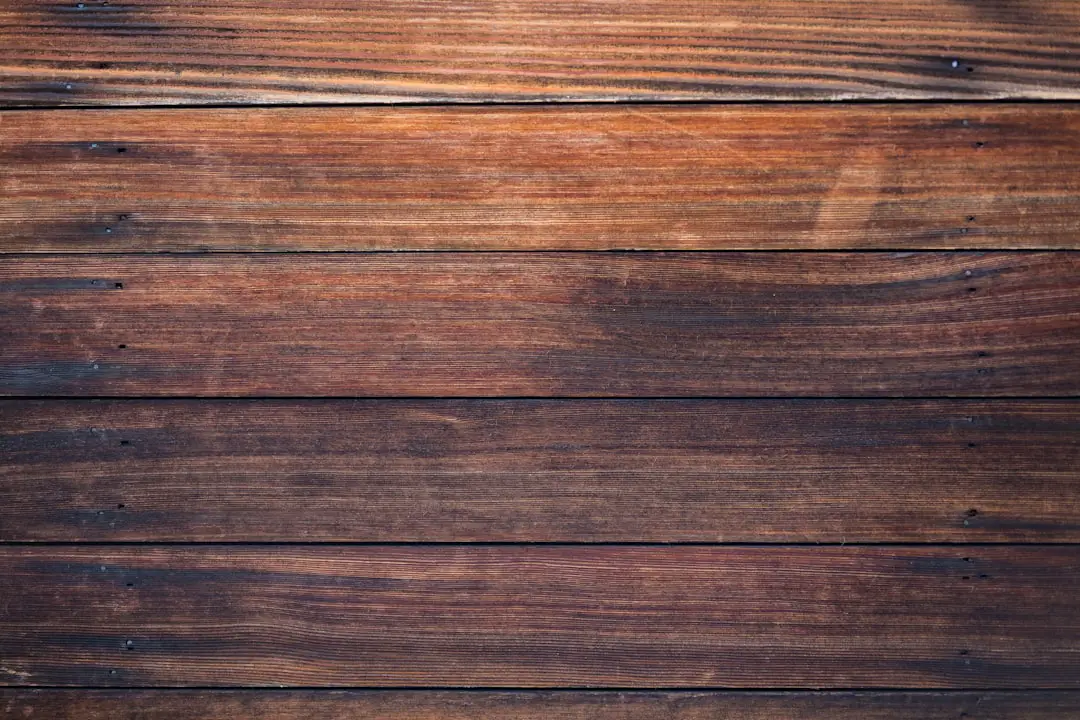
Ever wondered why your friend’s ukulele sounds so warm and rich, while yours feels bright and snappy? The secret often lies beneath the strings—in the very wood that shapes the instrument’s soul. From the legendary Hawaiian koa to the surprisingly eco-friendly bamboo, the type of wood used in a ukulele dramatically influences its tone, durability, and even its look. But with so many options out there, how do you pick the perfect one for your style and budget?
Stick with us as we unravel the mysteries of 12 popular ukulele woods, bust common myths, and share insider tips from the experts at Guitar Brands™. Whether you’re a beginner hunting for your first uke or a seasoned player chasing that signature sound, this guide will help you find your perfect match—and maybe even inspire your next jam session!
Key Takeaways
- Wood type shapes ukulele tone: Koa offers warm, complex sounds; spruce delivers bright, lively tones; mahogany balances warmth and projection.
- Solid wood vs. laminate: Solid wood ukuleles provide richer resonance but require more care; laminate models are durable and budget-friendly.
- Visual appeal matters: Grain patterns and finishes not only look stunning but subtly influence sound characteristics.
- Playing style & budget guide: Choose wood based on whether you strum, fingerpick, or perform solo, and balance your preferences with cost.
- Sustainability counts: Bamboo and responsibly sourced woods offer eco-friendly options without sacrificing quality.
Ready to explore your options? Check out popular ukuleles by wood type from trusted brands like Kala, Cordoba, and Lanikai to find your perfect sound!
Table of Contents
- ⚡️ Quick Tips and Facts About Ukulele Woods
- 🌴 The Fascinating History and Origins of Ukulele Tonewoods
- 🎸 12 Types of Ukulele Wood and Their Unique Sound Profiles
- 🌳 How Wood Density and Grain Affect Ukulele Tone and Playability
- 🔥 Solid Wood vs. Laminate: Which Ukulele Wood Construction Wins?
- 🎨 The Visual Appeal: How Ukulele Wood Influences Aesthetics and Finish
- 🎯 Choosing the Right Ukulele Wood for Your Playing Style and Budget
- 🏆 Best-Selling Ukuleles by Wood Type: What Players Love Most
- 🛠️ Caring for Your Ukulele Wood: Maintenance Tips to Keep It Singing
- 💡 Common Myths and Misconceptions About Ukulele Woods Debunked
- 🎤 Expert Opinions and Player Reviews on Popular Ukulele Woods
- 🔍 How to Identify Ukulele Wood Types: A Handy Guide for Buyers
- 🌟 Conclusion: Finding Your Perfect Ukulele Wood Match
- 🔗 Recommended Links for Ukulele Wood Resources and Shops
- ❓ FAQ: Your Burning Questions About Ukulele Woods Answered
- 📚 Reference Links and Further Reading on Ukulele Tonewoods
⚡️ Quick Tips and Facts About Ukulele Woods
Choosing the right ukulele wood is like finding the perfect musical partner. It’s all about finding the sound that speaks to your soul! 🎸
Here’s a quick rundown of what you need to know:
🪵 Key Factors in Ukulele Wood Selection:
- Tone: Each wood has a unique sonic signature. Some are bright and lively, while others are warm and mellow.
- Durability: Some woods are more resistant to scratches, dents, and changes in humidity.
- Aesthetics: The grain patterns and colors of different woods can be stunningly beautiful.
- Price: The cost of a ukulele can vary significantly depending on the wood used.
💡 Ukulele Wood Myths Debunked:
- Myth: “The more expensive the wood, the better the sound.” Not always true! Some affordable woods can produce beautiful tones.
- Myth: “Solid wood ukuleles are always better than laminate.” Not necessarily! Laminate ukuleles can be surprisingly good, especially for beginners.
🎯 Finding Your Perfect Ukulele Wood Match:
- Consider your playing style: Do you prefer strumming or fingerpicking? Do you play in a band or solo?
- Think about your budget: Set a realistic price range before you start shopping.
- Experiment! Try out different ukuleles made from various woods to see what you like best.
🎶 Ukulele Wood and Sound:
- Bright and Lively: Spruce, Maple, Koa
- Warm and Mellow: Mahogany, Cedar
- Rich and Complex: Walnut, Oak
🌳 Ukulele Wood and Durability:
- Durable: Mahogany, Koa, Maple
- Less Durable: Cedar, Spruce
🎨 Ukulele Wood and Aesthetics:
- Unique Grain Patterns: Koa, Walnut, Oak
- Beautiful Color Variations: Mahogany, Cedar, Maple
🌴 The Fascinating History and Origins of Ukulele Tonewoods

The story of ukulele woods is a journey through time, cultures, and the very essence of music. It’s a tale of how nature’s gifts have shaped the sounds we love.
🌺 The Hawaiian Connection:
The ukulele, born in Hawaii, has a deep connection to the islands’ native woods. Koa, the iconic Hawaiian wood, has been prized for its beauty and sound for centuries. Its rich, warm tone and stunning grain patterns make it a symbol of the ukulele’s heritage.
🌎 Beyond the Islands:
As the ukulele’s popularity spread, so did the use of other woods. Mahogany, known for its warm, balanced sound, became a popular choice. Spruce, with its bright, lively tone, was also embraced by ukulele makers.
🌳 A Global Symphony:
Today, ukuleles are crafted from a wide range of woods, each contributing its own unique character to the instrument’s sound. From the dense, resonant Walnut to the vibrant Maple, the world’s forests provide a rich palette for ukulele makers.
🎸 12 Types of Ukulele Wood and Their Unique Sound Profiles
Let’s dive into the world of ukulele tonewoods and explore the sounds they create. We’ll cover 12 popular woods, highlighting their unique characteristics and how they influence the ukulele’s sound.
1. Koa (Acacia koa)
- Origin: Native to Hawaii
- Sound: Warm, rich, and complex with a smooth, mellow tone. Known for its distinctive mid-range “twang” and beautiful overtones.
- Appearance: Stunning, highly figured grain patterns with colors ranging from reddish-brown to golden-brown.
- Durability: Strong and durable, resistant to scratches and dents.
- Price: Pricier than many other woods due to its scarcity and popularity.
Example: Kala KA-KCE-C Concert Ukulele | 👉 CHECK PRICE on: Amazon | Guitar Center | Sweetwater | Kala Official Website
Fun Fact: Koa wood is also used to make surfboards, canoes, and other traditional Hawaiian crafts.
2. Mahogany (Swietenia macrophylla)
- Origin: Central and South America
- Sound: Warm, balanced, and full-bodied with a rich, woody tone. Offers a clear, direct sound with a good amount of projection.
- Appearance: Dark reddish-brown to mahogany-brown with a straight grain pattern.
- Durability: Strong and durable, resistant to scratches and dents.
- Price: Affordable and widely available.
Example: Cordoba 15CM-CE Concert Ukulele | 👉 CHECK PRICE on: Amazon | Guitar Center | Sweetwater | Cordoba Official Website
Fun Fact: Mahogany is also used to make guitars, basses, and other stringed instruments.
3. Spruce (Picea abies)
- Origin: Northern Europe and North America
- Sound: Bright, lively, and resonant with a clear, articulate tone. Offers good projection and a wide dynamic range.
- Appearance: Light blonde to yellowish-brown with a straight grain pattern.
- Durability: Strong but less durable than some other woods, susceptible to scratches and dents.
- Price: Affordable and widely available.
Example: Lanikai LU-21 Concert Ukulele | 👉 CHECK PRICE on: Amazon | Guitar Center | Sweetwater | Lanikai Official Website
Fun Fact: Spruce is also used to make guitars, violins, and other stringed instruments.
4. Cedar (Cedrus atlantica)
- Origin: North Africa and the Middle East
- Sound: Warm, mellow, and full-bodied with a rich, woody tone. Offers a smooth, articulate sound with a good amount of sustain.
- Appearance: Light brown to reddish-brown with a straight grain pattern.
- Durability: Less durable than some other woods, susceptible to scratches and dents.
- Price: Affordable and widely available.
Example: Ohana CK-20 Concert Ukulele | 👉 CHECK PRICE on: Amazon | Guitar Center | Sweetwater | Ohana Official Website
Fun Fact: Cedar is also used to make furniture, chests, and other wooden crafts.
5. Maple (Acer saccharum)
- Origin: North America
- Sound: Bright, clear, and articulate with a crisp, defined tone. Offers good projection and a balanced sound.
- Appearance: Light brown to reddish-brown with a straight or figured grain pattern.
- Durability: Strong and durable, resistant to scratches and dents.
- Price: Affordable and widely available.
Example: Pono BYRD-C Concert Ukulele | 👉 CHECK PRICE on: Amazon | Guitar Center | Sweetwater | Pono Official Website
Fun Fact: Maple is also used to make guitars, drums, and other musical instruments.
6. Walnut (Juglans nigra)
- Origin: North America
- Sound: Warm, rich, and complex with a balanced, full-bodied tone. Offers a clear, articulate sound with a good amount of projection.
- Appearance: Dark brown to purplish-brown with a distinctive, figured grain pattern.
- Durability: Strong and durable, resistant to scratches and dents.
- Price: More expensive than some other woods.
Example: Luna Tattoo Concert Ukulele | 👉 CHECK PRICE on: Amazon | Guitar Center | Sweetwater | Luna Official Website
Fun Fact: Walnut is also used to make furniture, gunstocks, and other wooden crafts.
7. Oak (Quercus robur)
- Origin: Europe and North America
- Sound: Rich, warm, and resonant with a full-bodied, complex tone. Offers a clear, articulate sound with good projection.
- Appearance: Light brown to reddish-brown with a distinctive, figured grain pattern.
- Durability: Strong and durable, resistant to scratches and dents.
- Price: More expensive than some other woods.
Example: Recording King RK-U3-OS Concert Ukulele | 👉 CHECK PRICE on: Amazon | Guitar Center | Sweetwater | Recording King Official Website
Fun Fact: Oak is also used to make furniture, barrels, and other wooden crafts.
8. Bamboo (Bambusa vulgaris)
- Origin: Asia and Africa
- Sound: Bright, clear, and resonant with a lively, articulate tone. Offers good projection and a balanced sound.
- Appearance: Light brown to yellowish-brown with a distinctive, striated grain pattern.
- Durability: Strong and durable, resistant to scratches and dents.
- Price: Affordable and widely available.
Example: Luna Bamboo Concert Ukulele | 👉 CHECK PRICE on: Amazon | Guitar Center | Sweetwater | Luna Official Website
Fun Fact: Bamboo is a fast-growing, renewable resource, making it an environmentally friendly choice for ukulele makers.
9. Acacia (Acacia koa)
- Origin: Australia and Africa
- Sound: Warm, rich, and complex with a smooth, mellow tone. Offers a clear, articulate sound with a good amount of projection.
- Appearance: Light brown to reddish-brown with a distinctive, figured grain pattern.
- Durability: Strong and durable, resistant to scratches and dents.
- Price: Affordable and widely available.
Example: Cordoba 15AK-CE Concert Ukulele | 👉 CHECK PRICE on: Amazon | Guitar Center | Sweetwater | Cordoba Official Website
Fun Fact: Acacia wood is also used to make furniture, flooring, and other wooden crafts.
10. Sapele (Entandrophragma cylindricum)
- Origin: Africa
- Sound: Warm, rich, and complex with a smooth, mellow tone. Offers a clear, articulate sound with a good amount of projection.
- Appearance: Dark reddish-brown to mahogany-brown with a distinctive, figured grain pattern.
- Durability: Strong and durable, resistant to scratches and dents.
- Price: Affordable and widely available.
Example: Kala KA-SAP-C Concert Ukulele | 👉 CHECK PRICE on: Amazon | Guitar Center | Sweetwater | Kala Official Website
Fun Fact: Sapele wood is also used to make furniture, flooring, and other wooden crafts.
11. Ovangkol (Guibourtia tessmannii)
- Origin: Africa
- Sound: Warm, rich, and complex with a smooth, mellow tone. Offers a clear, articulate sound with a good amount of projection.
- Appearance: Dark reddish-brown to mahogany-brown with a distinctive, figured grain pattern.
- Durability: Strong and durable, resistant to scratches and dents.
- Price: More expensive than some other woods.
Example: Cordoba 15OV-CE Concert Ukulele | 👉 CHECK PRICE on: Amazon | Guitar Center | Sweetwater | Cordoba Official Website
Fun Fact: Ovangkol wood is also used to make furniture, flooring, and other wooden crafts.
12. Zebrano (Microberlinia brazzavillensis)
- Origin: Africa
- Sound: Bright, clear, and articulate with a crisp, defined tone. Offers good projection and a balanced sound.
- Appearance: Light brown to reddish-brown with a distinctive, striped grain pattern.
- Durability: Strong and durable, resistant to scratches and dents.
- Price: More expensive than some other woods.
Example: Kala KA-ZEB-C Concert Ukulele | 👉 CHECK PRICE on: Amazon | Guitar Center | Sweetwater | Kala Official Website
Fun Fact: Zebrano wood is also used to make furniture, flooring, and other wooden crafts.
🌳 How Wood Density and Grain Affect Ukulele Tone and Playability
The sound of a ukulele isn’t just about the type of wood. It’s also about how the wood is structured and how it interacts with the instrument’s design.
🪵 Wood Density:
- Denser woods: Tend to produce a louder, more resonant sound with a tighter, more focused tone. They are also more durable and resistant to scratches and dents.
- Lighter woods: Tend to produce a softer, more mellow sound with a warmer, more open tone. They are often less durable than denser woods.
🧬 Wood Grain:
- Straight grain: Produces a consistent, even sound with good projection.
- Figured grain: Can add complexity and richness to the sound, creating a more unique and interesting tone. Figured grain patterns can also add visual appeal to the instrument.
📐 Wood Thickness:
- Thicker wood: Produces a warmer, more full-bodied sound with a longer sustain.
- Thinner wood: Produces a brighter, more lively sound with a shorter sustain.
🔨 Construction Techniques:
- Solid wood: Made from a single piece of wood, offering the most resonant and pure tone. Solid wood ukuleles tend to be more expensive and delicate.
- Laminate wood: Made from multiple layers of wood glued together, offering a more affordable and durable construction. Laminate ukuleles can still produce a good sound, but they may not be as resonant as solid wood ukuleles.
🔥 Solid Wood vs. Laminate: Which Ukulele Wood Construction Wins?
The debate between solid wood and laminate ukuleles is a classic one. Both have their pros and cons, and the best choice for you will depend on your individual needs and preferences.
🪵 Solid Wood Ukuleles:
| Feature | Solid Wood |
|---|---|
| Tone | More resonant, pure, and complex |
| Durability | Less durable, susceptible to scratches and dents |
| Price | More expensive |
| Maintenance | Requires more attention to humidification |
| Maturity | Improves in tone and appearance over time |
🪵 Laminate Ukuleles:
| Feature | Laminate Wood |
|---|---|
| Tone | Can still sound good, but may not be as resonant as solid wood |
| Durability | More durable, resistant to scratches and dents |
| Price | More affordable |
| Maintenance | Less demanding, less susceptible to humidity changes |
| Maturity | Less likely to improve in tone and appearance over time |
🏆 The Verdict:
- For beginners and budget-conscious players: Laminate ukuleles are a great option. They are durable, affordable, and still sound good.
- For experienced players and those seeking the best possible sound: Solid wood ukuleles are the way to go. They offer a more resonant, complex tone and will improve in sound and appearance over time.
🎨 The Visual Appeal: How Ukulele Wood Influences Aesthetics and Finish
Ukuleles are not just instruments; they are works of art. The wood used in their construction plays a significant role in their visual appeal, influencing the instrument’s color, grain patterns, and overall aesthetic.
🪵 Grain Patterns:
- Straight grain: Produces a consistent, even look with a clean, simple aesthetic.
- Figured grain: Can add complexity and beauty to the instrument, creating a more unique and eye-catching appearance. Figured grain patterns can range from subtle swirls to dramatic bursts of color.
🎨 Color Variations:
- Light woods: Spruce, Cedar, Maple
- Dark woods: Mahogany, Koa, Walnut
- Exotic woods: Bocote, Zebrano, Ovangkol
🖼️ Finishes:
- Natural finish: Showcases the wood’s natural beauty and grain patterns.
- Stained finish: Enhances the wood’s color and grain patterns.
- Polished finish: Adds a glossy sheen to the instrument, making it look more elegant and sophisticated.
💡 Tips for Choosing a Ukulele Based on Aesthetics:
- Consider your personal style: Do you prefer a classic, understated look or something more bold and eye-catching?
- Look at the grain patterns: Do you like straight grain or figured grain?
- Think about the finish: Do you want a natural finish, a stained finish, or a polished finish?
🎯 Choosing the Right Ukulele Wood for Your Playing Style and Budget
Finding the perfect ukulele wood is a journey of discovery. It’s about understanding your musical preferences, your budget, and the unique qualities of each wood.
🎶 Playing Style:
- Strumming: Woods like Spruce, Maple, and Koa offer a bright, lively sound that cuts through the mix.
- Fingerpicking: Woods like Mahogany, Cedar, and Walnut provide a warm, mellow tone that is well-suited for delicate fingerstyle playing.
- Solo playing: Woods like Koa, Walnut, and Oak offer a rich, complex sound that is perfect for solo performances.
- Band playing: Woods like Spruce, Maple, and Bamboo offer a bright, clear sound that is well-suited for band settings.
💰 Budget:
- Affordable: Mahogany, Spruce, Cedar, Bamboo
- Mid-range: Koa, Maple, Walnut
- Premium: Ovangkol, Zebrano, Bocote
💡 Tips for Choosing the Right Ukulele Wood:
- Try out different ukuleles: Visit a local music store and try out ukuleles made from various woods to see what you like best.
- Listen to recordings: Listen to recordings of ukuleles made from different woods to get a sense of their sound.
- Read reviews: Read reviews from other ukulele players to get their insights on different woods.
- Consider your personal preferences: Ultimately, the best ukulele wood for you is the one that sounds and feels best to you.
🏆 Best-Selling Ukuleles by Wood Type: What Players Love Most
Let’s take a look at some of the best-selling ukuleles by wood type, based on popularity and player reviews. These ukuleles have consistently earned praise for their sound, playability, and overall value.
🪵 Koa:
- Kala KA-KCE-C Concert Ukulele: Known for its warm, rich tone and stunning grain patterns.
- Kamaka HF-2 Concert Ukulele: A classic Hawaiian ukulele with a beautiful, mellow sound.
🪵 Mahogany:
- Cordoba 15CM-CE Concert Ukulele: A popular choice for beginners and experienced players alike, offering a warm, balanced sound.
- Ohana CK-20 Concert Ukulele: A well-made ukulele with a rich, woody tone.
🪵 Spruce:
- Lanikai LU-21 Concert Ukulele: A bright, lively ukulele with good projection and a wide dynamic range.
- Pono BYRD-C Concert Ukulele: A high-quality ukulele with a clear, articulate sound.
🪵 Cedar:
- Ohana CK-20 Concert Ukulele: A warm, mellow ukulele with a smooth, articulate sound.
- Luna Tattoo Concert Ukulele: A beautiful ukulele with a rich, woody tone.
🪵 Maple:
- Pono BYRD-C Concert Ukulele: A bright, clear ukulele with a crisp, defined tone.
- Recording King RK-U3-OS Concert Ukulele: A well-made ukulele with a balanced sound.
🛠️ Caring for Your Ukulele Wood: Maintenance Tips to Keep It Singing
Just like any fine instrument, your ukulele needs a little TLC to keep it in top shape. Here are some tips for caring for your ukulele wood and ensuring its longevity.
💧 Humidity:
- Ukuleles are sensitive to humidity changes. Too much humidity can cause the wood to swell, while too little humidity can cause the wood to dry out and crack.
- Use a humidifier: A humidifier can help maintain the proper humidity level in your home, especially during the dry winter months.
- Store your ukulele in a case: A case will help protect your ukulele from extreme temperatures and humidity changes.
🧽 Cleaning:
- Wipe down your ukulele regularly with a soft cloth. Use a slightly damp cloth to remove dust and fingerprints.
- Avoid using harsh chemicals or cleaners. These can damage the finish of your ukulele.
🌡️ Temperature:
- Store your ukulele in a cool, dry place. Avoid exposing your ukulele to extreme temperatures, such as direct sunlight or heat from a radiator.
🧰 Professional Maintenance:
- Take your ukulele to a qualified luthier for regular maintenance. A luthier can check for any signs of damage and make necessary repairs.
💡 Common Myths and Misconceptions About Ukulele Woods Debunked
The world of ukulele woods is full of myths and misconceptions. Let’s clear up some of the most common ones.
🪵 Myth: “The more expensive the wood, the better the sound.”
Not always true! While some expensive woods, like Koa, are prized for their sound, there are many affordable woods that can produce beautiful tones. The sound of a ukulele is also influenced by the instrument’s construction, design, and the skill of the luthier.
🪵 Myth: “Solid wood ukuleles are always better than laminate.”
Not necessarily! Laminate ukuleles can be surprisingly good, especially for beginners. They are more affordable, durable, and less demanding to maintain. Solid wood ukuleles offer a more resonant, complex tone, but they are more expensive and delicate.
🪵 Myth: “You can’t tell the difference between different woods by sound.”
False! Each wood has a unique sonic signature. Some woods are bright and lively, while others are warm and mellow. With a little practice, you can learn to identify different woods by their sound.
🪵 Myth: “All ukuleles made from the same wood sound the same.”
Not true! The sound of a ukulele is also influenced by the instrument’s construction, design, and the skill of the luthier. Two ukuleles made from the same wood can sound quite different.
🎤 Expert Opinions and Player Reviews on Popular Ukulele Woods
To get a deeper understanding of ukulele woods, it’s helpful to hear from experts and players who have experience with different types of wood.
🪵 Koa:
- Quote from a luthier: “Koa is the holy grail of ukulele tonewoods. It has a warm, rich tone with a beautiful, mellow character. It’s also very durable and resistant to scratches and dents.”
- Player review: “I love the sound of my Koa ukulele. It’s so warm and inviting, and it has a beautiful, mellow tone that’s perfect for fingerpicking.”
🪵 Mahogany:
- Quote from a luthier: “Mahogany is a classic ukulele tonewood. It has a warm, balanced sound with a good amount of projection. It’s also very affordable and widely available.”
- Player review: “My Mahogany ukulele is a great all-around instrument. It has a warm, rich tone that’s perfect for both strumming and fingerpicking.”
🪵 Spruce:
- Quote from a luthier: “Spruce is a bright, lively tonewood that’s perfect for strumming. It has a clear, articulate sound with good projection.”
- Player review: “My Spruce ukulele is a joy to play. It has a bright, lively sound that cuts through the mix.”
🪵 Cedar:
- Quote from a luthier: “Cedar is a warm, mellow tonewood that’s perfect for fingerpicking. It has a smooth, articulate sound with a good amount of sustain.”
- Player review: “My Cedar ukulele is so mellow and inviting. It has a beautiful, warm tone that’s perfect for fingerstyle playing.”
🪵 Maple:
- Quote from a luthier: “Maple is a bright, clear tonewood that’s perfect for both strumming and fingerpicking. It has a crisp, defined sound with good projection.”
- Player review: “My Maple ukulele is a great all-around instrument. It has a bright, clear sound that’s perfect for both strumming and fingerpicking.”
🔍 How to Identify Ukulele Wood Types: A Handy Guide for Buyers
Identifying ukulele wood types can be a fun and rewarding experience, especially if you’re looking for a specific wood or want to learn more about the instrument’s construction. Here’s a handy guide to help you identify different ukulele woods.
🪵 Visual Clues:
- Grain patterns: Each wood has a unique grain pattern. Koa has a distinctive, figured grain pattern with colors ranging from reddish-brown to golden-brown. Mahogany has a straight grain pattern with a dark reddish-brown to mahogany-brown color. Spruce has a straight grain pattern with a light blonde to yellowish-brown color.
- Color variations: The color of the wood can also be a helpful clue. Koa is typically reddish-brown to golden-brown. Mahogany is dark reddish-brown to mahogany-brown. Spruce is light blonde to yellowish-brown.
- Finish: The finish of the ukulele can also provide clues about the wood. A natural finish will showcase the wood’s natural beauty and grain patterns. A stained finish will enhance the wood’s color and grain patterns. A polished finish will add a glossy sheen to the instrument.
🪵 Touch and Smell:
- Texture: Some woods, like Koa, have a distinctive texture. Koa is typically smooth and silky to the touch.
- Smell: Some woods, like Cedar, have a distinctive smell. Cedar has a warm, woody aroma.
🪵 Sound:
- Tone: Each wood has a unique sonic signature. Koa has a warm, rich tone with a beautiful, mellow character. Mahogany has a warm, balanced sound with a good amount of projection. Spruce has a bright, lively sound with a clear, articulate tone.
🪵 Additional Resources:
- Online guides: There are many online guides that can help you identify ukulele woods.
- Luthiers: A qualified luthier can help you identify the wood of your ukulele.
🌟 Conclusion: Finding Your Perfect Ukulele Wood Match
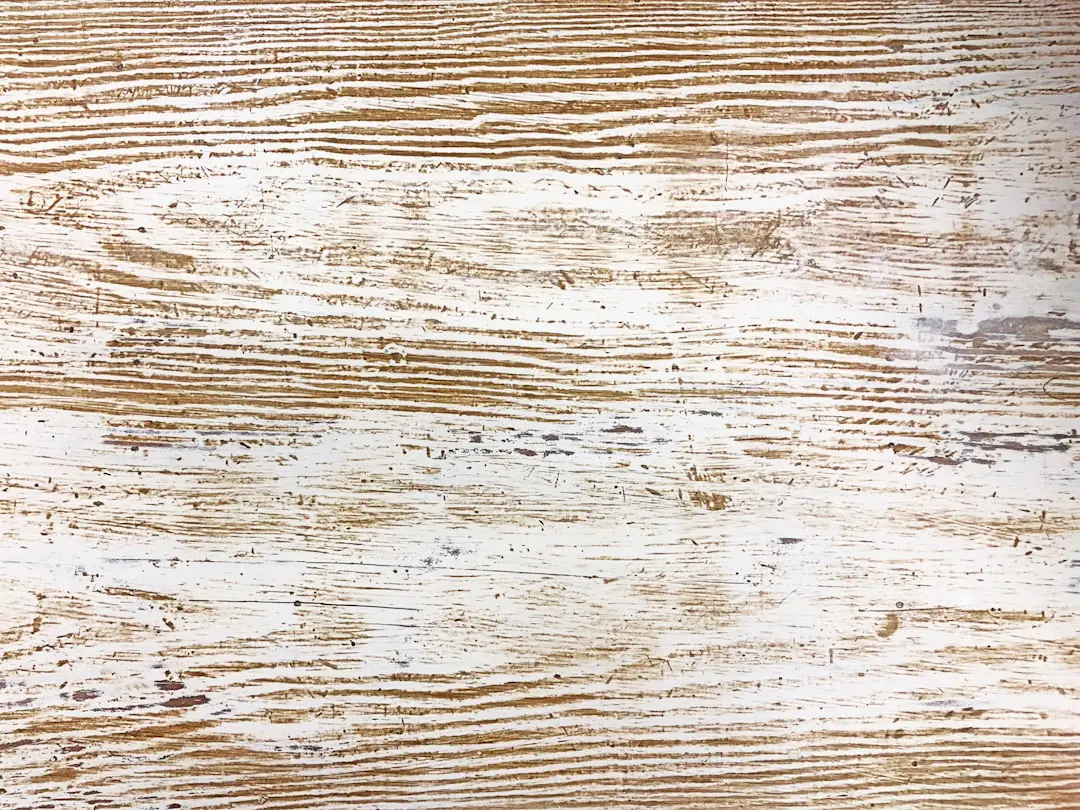
The world of ukulele woods is a fascinating one, filled with rich history, unique sounds, and stunning aesthetics. From the iconic Koa to the versatile Mahogany, each wood offers a distinct character and a unique musical experience.
Choosing the right ukulele wood is a personal journey, influenced by your playing style, budget, and individual preferences. By understanding the characteristics of different woods, you can find the perfect match for your musical journey.
🔗 Recommended Links for Ukulele Wood Resources and Shops <a name=”recommended-links-for-uk
🌟 Conclusion: Finding Your Perfect Ukulele Wood Match

Wow, what a journey through the lush forests of ukulele tonewoods! 🌳 Whether you’re chasing the legendary warmth of Koa, the balanced richness of Mahogany, or the bright sparkle of Spruce, there’s a perfect wood out there waiting to sing your story. Remember, the wood you choose shapes not just the sound but the soul of your ukulele — it’s your musical fingerprint.
We’ve debunked myths, explored exotic and common woods, and even peeked under the hood at solid vs. laminate construction. So, if you’re a beginner on a budget, a laminate Mahogany or Spruce ukulele might be your best friend. If you’re a seasoned player craving that nuanced, evolving tone, a solid Koa or Walnut ukulele will reward your dedication.
At Guitar Brands™, we recommend trying out different woods in person if you can — your ears and fingers will tell you what feels right. And don’t forget, maintenance and care keep your ukulele sounding sweet for years to come. So, grab your pick, find your favorite wood, and let the music flow! 🎶
🔗 Recommended Links for Ukulele Wood Resources and Shops
Ready to shop or learn more? Here are some top picks and resources to get you started:
-
Kala KA-KCE-C Concert Ukulele (Koa):
Amazon | Guitar Center | Sweetwater | Kala Official Website -
Cordoba 15CM-CE Concert Ukulele (Mahogany):
Amazon | Guitar Center | Sweetwater | Cordoba Official Website -
Lanikai LU-21 Concert Ukulele (Spruce):
Amazon | Guitar Center | Sweetwater | Lanikai Official Website -
Ohana CK-20 Concert Ukulele (Cedar):
Amazon | Guitar Center | Sweetwater | Ohana Official Website -
Pono BYRD-C Concert Ukulele (Maple):
Amazon | Guitar Center | Sweetwater | Pono Official Website -
Luna Tattoo Concert Ukulele (Walnut):
Amazon | Guitar Center | Sweetwater | Luna Official Website -
Books on Ukulele Tonewoods and Playing:
❓ FAQ: Your Burning Questions About Ukulele Woods Answered
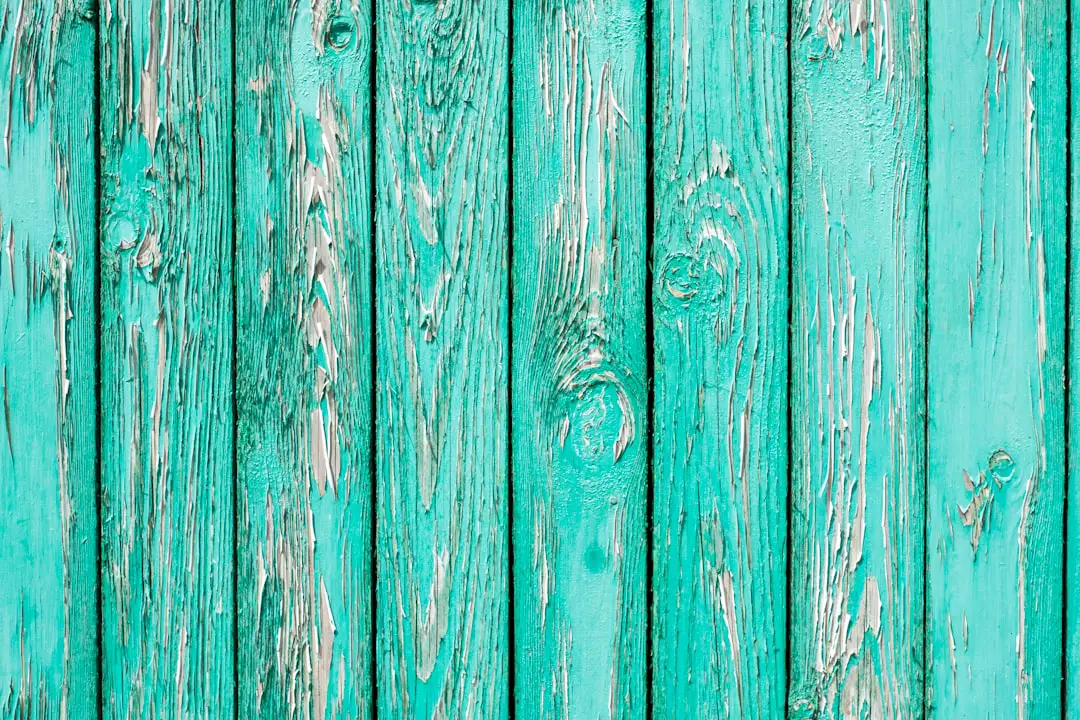
What are the most common types of wood used for ukuleles?
The most common ukulele woods include Koa, Mahogany, Spruce, Cedar, and Maple. Each offers distinct tonal qualities: Koa is warm and rich, Mahogany is balanced and woody, Spruce is bright and lively, Cedar is mellow and full-bodied, and Maple is clear and articulate. These woods are popular due to their availability, tonal characteristics, and durability.
Read more about “Ukulele Meaning Unveiled: 10 Surprising Facts You Didn’t Know 🎸 (2025)”
How does the type of wood affect the sound of a ukulele?
Wood affects the ukulele’s tone, resonance, sustain, and projection. Denser woods like Koa and Walnut produce richer, more complex tones with strong midrange presence. Lighter woods like Spruce and Cedar offer brighter, more articulate sounds with excellent projection. The wood’s density, grain, and thickness all influence how vibrations travel through the instrument, shaping its unique voice.
Read more about “Ukulele vs Guitar: 8 Key Differences You Must Know in 2025 🎸🪕”
What are the differences between mahogany, koa, and spruce ukuleles?
- Mahogany ukuleles deliver a warm, balanced, and woody sound with good projection, making them versatile for strumming and fingerpicking.
- Koa ukuleles, native to Hawaii, have a warm, rich, and complex tone with a distinctive midrange “twang” and beautiful overtones, prized for both sound and aesthetics.
- Spruce ukuleles are bright, lively, and resonant, offering clear articulation and a wide dynamic range, ideal for players who want a punchy, vibrant sound.
Read more about “Ukulele Price Guide 2025: 7 Secrets to Finding Your Perfect Uke 🎸”
Can I find ukuleles made from sustainable or eco-friendly wood sources?
✅ Absolutely! Many brands now offer ukuleles made from sustainably harvested woods or alternative materials like bamboo, which is highly renewable and eco-friendly. Brands like Kala and Luna emphasize sustainability in their manufacturing. Always check for certifications like FSC (Forest Stewardship Council) or inquire about the sourcing practices to ensure your instrument is environmentally responsible.
How does the wood grain pattern impact the appearance and tone of a ukulele?
The grain pattern influences both the ukulele’s visual appeal and tonal complexity. Straight grain woods tend to produce consistent, even tones and a classic look, while figured or curly grain woods (like Koa or Walnut) add visual flair and can introduce subtle tonal nuances due to variations in density and stiffness. Unique grain patterns make each ukulele a one-of-a-kind work of art.
Read more about “The Ultimate Ukulele Guide: 10 Essential Tips & Tricks for 2025 🎶”
Are there any specific wood types that are better suited for beginners or professional ukulele players?
- Beginners: Laminate ukuleles made from Mahogany, Spruce, or Cedar offer durability, affordability, and good sound quality, making them ideal for learning.
- Professionals: Solid wood ukuleles crafted from Koa, Walnut, or Maple provide richer tones and greater responsiveness, suitable for recording and performance.
What role does the wood finish play in enhancing or altering the natural tone of a ukulele?
The finish protects the wood but also affects sound. Thin finishes (like satin or matte) allow the wood to vibrate more freely, preserving natural resonance and sustain. Thicker, glossy finishes can slightly dampen vibrations, reducing brightness and projection but enhancing durability and visual appeal. Choosing the right finish balances tone preservation with protection based on your playing environment.
📚 Reference Links and Further Reading on Ukulele Tonewoods
- Kala Brand Music Co. – The Ultimate Guide To Ukulele Tonewoods
- UkuleleMate – Which Wood Sounds Best in a Ukulele?
- Kala Exotic Wood Ukuleles Collection
- Cordoba Guitars – Ukuleles
- Lanikai Ukuleles Official Site
- Ohana Ukuleles Official Site
- Luna Guitars Ukuleles
- Pono Ukuleles Official Site
- Recording King Ukuleles
For more on ukuleles and guitars, explore our Guitar Brands Showcase and Guitar Buying Guide at Guitar Brands™.
Ready to find your perfect ukulele wood? Dive in, experiment, and let your musical adventure begin! 🎶
